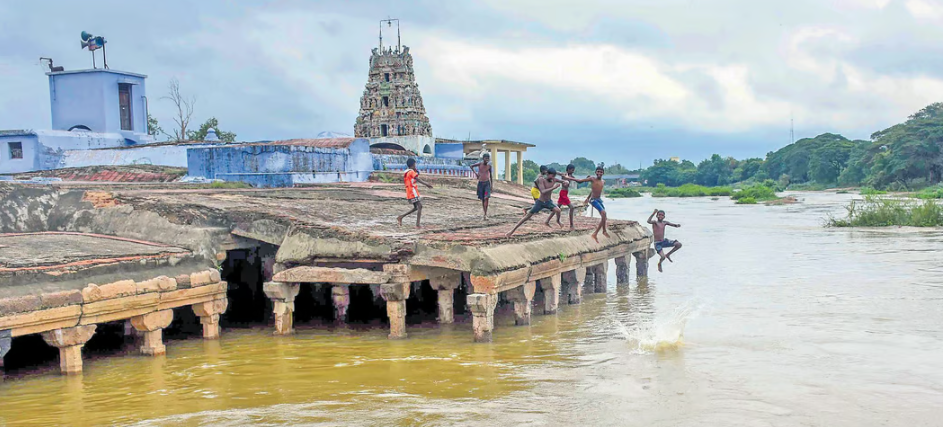- Alwarthirunagari Perumal Temple is a Hindu temple dedicated to Vishnu and Lakshmi in Alwarthirunagari, a town in Thoothukudi district in the Indian state of Tamil Nadu.
- It is located 26 km from Tirunelveli.
- Constructed in the Dravidian style of architecture, the temple is glorified in the Naalayira Divya Prabandham, the early mediaeval Tamil canon of the Alwar saints from the 6th–9th centuries CE.
- It is one of the 108 Divya Desams dedicated to Vishnu, who is worshipped as Adinathar and Lakshmi, who is worshipped as Adinathavalli.
- The temple is also classified as a Navatirupati, the nine temples revered by Nammalvar located in the banks of Thamirabarani river.
- It is the 9th Temple among the nava tirupathi temples.
- The temple is the most prominent among the nine Navatirupati temples.
- The temple is one of the Navagraha temples in Vaishnavism, associated with Brihaspati.
PURANIC SIGNIFICANCE 1:
- Alwar Tirunagari is believed to be the largest town in the time of Pandya kings.
- The distinguishing name, with Alvar in Tamil prefixed to Thirunagari means the people who spoke languages first and spoke the correct language.
- The temple is considered the birthplace of Nammalvar, considered the most prominent among the twelve Alvars Saints.
- Nammalvar has contributed more than thousand verses out of the four thousand in Naalayira Divya Prabhandam, the Vaishnava canon.
PURANIC SIGNIFICANCE 2:
- According to traditional scriptures, Nammalvar was born in 43rd Kali of 3059 BCE.
- He was born in a Mallar family at Thirukuravur (modern day Alwarthirunagiri) in the southernmost region of the Tamil country. According to legend, as a child he responded to no external stimuli and his parents left him at the feet of the deity of Sri Adhinathar of Nagar tribe in Alwarthirunagari.
- The child then got up and climbed into a hole in a tamarind tree, sat in the lotus position, and began to meditate.
- It appears he was in this state for as long as sixteen years when a Tamil poet and scholar in Madurai named Madhurakavi Alvar saw a bright light shining in the south, and followed it until he reached the tree where the boy was residing.
- Unable to elicit any reaction from the child, he asked him a riddle: "If the small is born in a dead's body (or stomach), what will it eat and where will it stay?" meaning, if the subtle soul is embodied in the gross body, what are its actions and thoughts? Nammalvar broke his lifelong silence and responded, "That it will eat, it will rest!" meaning that if the soul identifies with the body, it will be the body but if it serves the divine, it will stay in Vaikuntha and eat (think) of God.
- Madhurakavi Alvar realised the divinity of this child and became a devotee of the child.
- The works of Nammalwar were compiled by Madhurakavi as four different works, the Tiruvaymoli (1102 verses), Thiruviruttam (100 verses), Thiruvaasiriam (or Thiru Aasiriyam - 7 verses) and Periya Thiruvanthadi (87 verses).
- The works of Nammalwar contributed to the philosophical and theological ideas of Vaishnavism.
- Along with the three samaya kuravargal, Shaiva Nayanars Appar, Sundarar and Sambandar, they influenced the ruling Pallava kings of South India, changing the religious geography from Buddhism and Jainism to Hinduism.
ADMINISTRATION:
- In modern times, the temple is maintained and administered by the Hindu Religious and Endowment Board of the Government of Tamil Nadu.
- The temple houses a number of paintings depicting various scenes of the epic Ramayana.
- There are composite pillars in the temple numbering 48 which have remarkable sculptures.
- There is a tamarind tree on the precincts of the temple, which is believed to have been the birthplace of Nammalvar.
- Devotees take strips of the trees for medicinal purposes.
9edacb.png)
